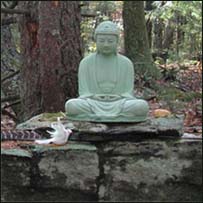|
|
 |
Please support Dharma Seed with a 2025 year-end gift.
Your donations allow us to offer these teachings online to all.

|

|

|
The greatest gift is the
gift of the teachings
|
|

|
| |
|
Dharma Talks
|
2016-06-09
Cultivating Mindfulness
3:48:42
|
|
| with
Renee Burgard,
Shaila Catherine,
Sharon Allen
|
|
This series is an introduction to the meditative development of mindfulness through which we refine our ability to focus and bring clear attention to all aspects of experience. We will cultivate mindfulness of breath, sensations, emotions, thoughts and actions. This series includes exercises that enhance mindfulness, support the establishment of a daily meditation practice, and highlight balanced awareness in work and home life.
|
|
Insight Meditation South Bay - Silicon Valley
|
|
|
|
|
2016-06-09
Mindfulness with Breathing
1:13:48
|
|
Shaila Catherine
|
|
|
Shaila Catherine gave the first talk in a four-week series titled "Cultivating Mindfulness." This talk focused on using the breath as the meditation object. When we observe our breath, our mind is free from unwholesome states, such as anger, greed, or doubt, because we are simply connecting with the very ordinary experience of breathing. We are not being pushed or pulled by desire or aversion. In fact, when we connect with the breath, we experience ease and happiness.
|
|
Insight Meditation South Bay - Silicon Valley
|
|
In
collection:
Cultivating Mindfulness
|
|
|
|
|